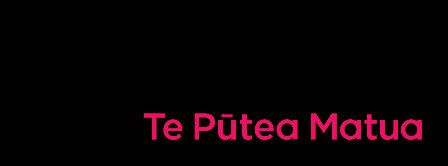

 UNCLASSIFIED
UNCLASSIFIED
22 August 2022
Darren-Edward
Via Email: [FYI request #20056 email]
Dear Darren-Edward,
Thank you for your request of 28 July 2022 made under the Official Information Act 1982 (OIA)
for the following:
i am looking for clarification, please note i am just a common man and looking for plain
English without any confusion or legalese type language designed for persons and not the
common man or woman;
i am of the understanding because debt can be sold, therefor its also considered to be classed
as money by financial institutions and that the financial institutions use Generally Accepted
Accounting Principles (GAAP);
I'd like a simple answer to the following,
1. When a bank gives loan to someone it goes into both the asset and liability column of a
banks financial books;
2. When the loan is paid in full, the bank removes it from the asset books and the interest is
placed into the income column of the banks financial books;
3. The loan still remains on the liability side of the books;
4. The bank at some stage the move this liability into the income column of their financial
books, as it can only have so many liabilities;
please feel free to correct me in anyways, if what i am saying is in anyway incorrect i ask
that you please clarify in anyways needed, as i stated i am but a simple man trying to figure
out something that is more complicated than my current understanding
Response
Please find below our itemised response to your request.
1.
When a bank gives loan to someone it goes into both the asset and liability column of a
bank’s financial books. No, a release of a loan only impacts a bank’s asset column. Assume the loan is $100. When
the loan is created, the bank’s cash assets decrease by $100 and the bank records the loan
to the borrower as an asset of $100. The proceeds of the loan received by the borrower
might be deposited in the borrower’s account within the bank. This is recorded as a bank
liability but accounted for separately.
Ref #3299666 v1.1
UNCLASSIFIED
 UNCLASSIFIED
UNCLASSIFIED
2.
When the loan is paid in full, the bank removes it from the asset books and the interest is
placed into the income column of the bank’s financial books. Yes, assuming the loan and interest are made as one-off payments at maturity of the loan.
Normally, payments are made over time. Assuming the borrower pays principal and
interest over time, part of the payment reduces the loan balance and part of it pays off the
interest. As an example, if the borrower pays $11 per week ($10 as loan payment and $1
as interest) the bank receives cash (cash assets increase by $11), the balance of the loan
reduces by $10 (loan assets reduce) and the bank also receives interest of $1 which is
recorded as income.
3. The loan still remains on the liability side of the books.
No. As stated above, loans are accounted for by the bank as assets. When the loan is
paid, the amount reverts back to cash assets. This means that when the loan is repaid in
full it no longer exists as an asset (it is never recorded as a liability).
4. The bank at some stage [moves] this liability into the income column of their financial books,
as it can only have so many liabilities.
No. As noted above, recording of the loan and the interest received does not impact the
recording of bank liabilities. Loans are recorded as assets and reduced over time by loan
payments while interest payments received are recorded as income.
OIA charging
The OIA allows charges to be imposed for the preparation of information in response to
requests. The Reserve Bank is resourced to meet disclosure obligations for a reasonable level
of requests and the cost of providing free responses to official information requests is generally
borne by taxpayers. However, the Reserve Bank believes that requesters should bear some of
the costs, where allowable under the OIA, when requests are made for large amounts of
information, where a response is particularly complex, or where individuals or organisations
make frequent requests. In this instance, no charge is being made under the OIA.
You have the right to seek an investigation and review of this response by the Ombudsman, in
accordance with section 28(3) of the OIA. The relevant details can be found on the
Ombudsman’s website at
www.ombudsman.parliament.nz.
Please note that we intend to publish a copy of this response on the RBNZ website at
www.rbnz.govt.nz/research-and-publications/official-information-requests. Responses to
requests are published in order to improve public transparency and provide an additional
resource for anyone seeking information.
Yours sincerely,
Adrienne Martin
Manager, Government and Industry Relations
Reserve Bank of New Zealand - Te Pūtea Matua
2
UNCLASSIFIED



